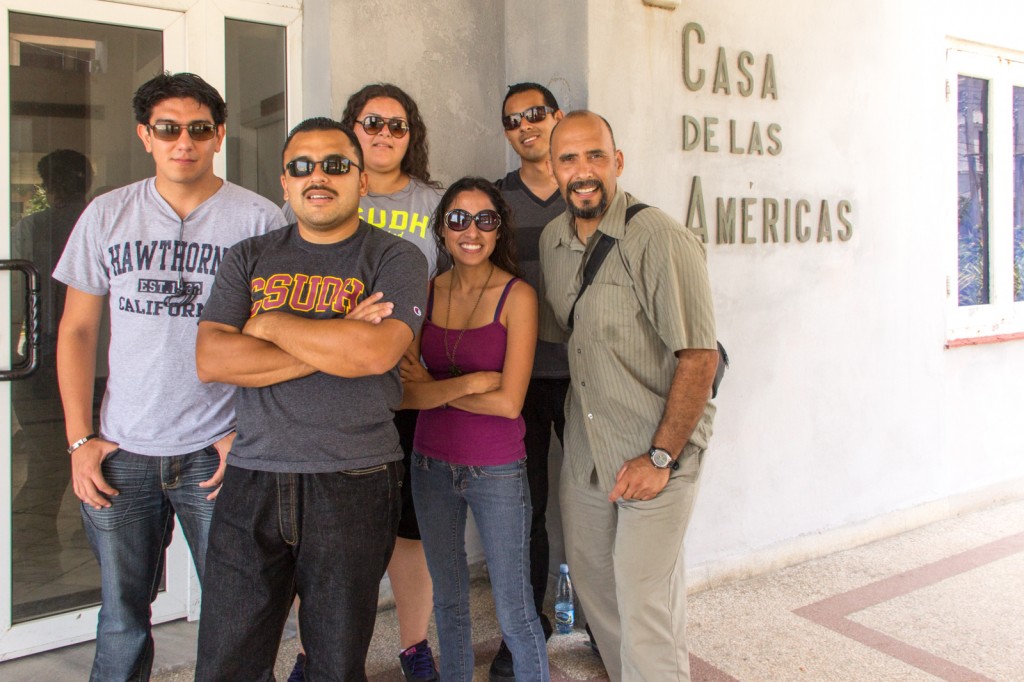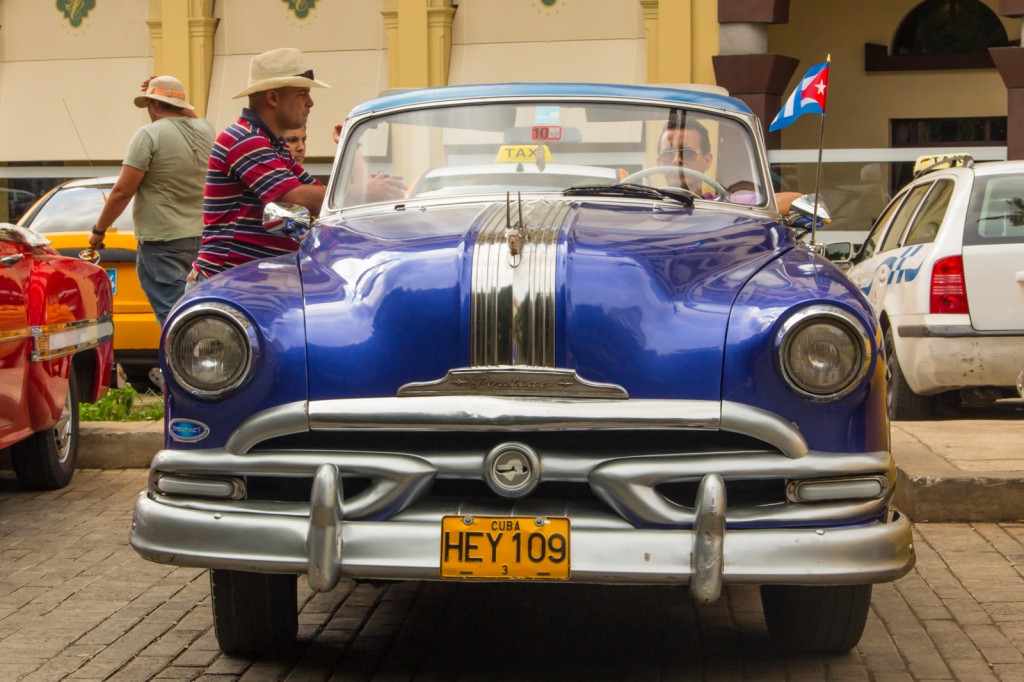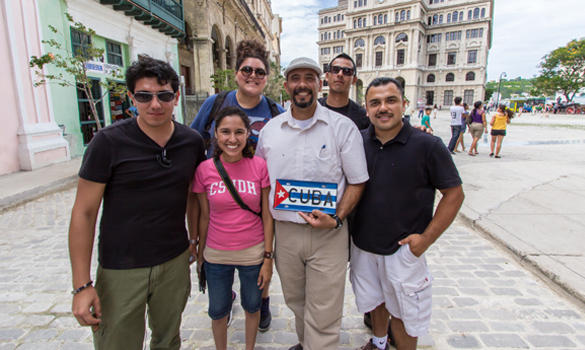The idea to take a group of students to Cuba stemmed from an academic visit that Jose Prado made to the island nation when he was a graduate sociology student more than 10 years ago.

“I made a promise to myself that, like the professors who took me and other students to study in Cuba, I’d do the same when I became a professor,” he said.
Prado kept his promise.
Prado, an associate professor of sociology at California State University, Dominguez Hills, collaborated with Cuban academics from Havana’s Universidad de la Habana and Casa de las Americas (CLA), a Cuban cultural institution, to design a week-long academic seminar, Latitudes de Latinidad en America (Latitudes of Latina/o Identity in America), which was hosted at CLA last summer.
An exhibit of photographs from the trip taken by senior Chicana/o studies major Raul Menjivar, opens March 18 in the University Library Cultural Art Center. An opening reception on March 18 is from 6 to 7 p.m.
Prado and two Cuban instructors provided instruction to five Cuban students and five students from CSU Dominguez Hills, including Menjivar and one who has since graduated: Angie Aguilar (Class of ’13, Spanish, minor: sociology), Jazmin Escobar (senior, Chicana/o studies), Luis Portilla (junior, Spanish linguistics), and Francisco Santos (senior, sociology).
 The students examined the definition of America and what it means to be Latino across the Americas, the source of these definitions, and insights into the general historical, social, and political understandings about these areas, as well as examining their own individual identities as Americans and, simultaneously, as Latinos.
The students examined the definition of America and what it means to be Latino across the Americas, the source of these definitions, and insights into the general historical, social, and political understandings about these areas, as well as examining their own individual identities as Americans and, simultaneously, as Latinos.
“I grew up with an understanding about myself as an American that really isn’t a part of understandings of being an American that I acquired at school,” Prado said.
During his first visit to Cuba in 2003 while a grad student at the University of Southern California, Prado discovered that Cubans face a parallel duality, being culturally American but identifying with being Latino of a particular region and heritage.
“America is not a country but a continent and that like people in the U.S., Cubans and others from other countries in America have a claim to that term, [American], for self identification,” Prado said.
During his fourth and most recent trip, Prado provided the opportunity for his students to observe the same for themselves. In their study they focused on unifying factors among different Latino cultures.
Student Jazmin Escobar, who by sociology terms is a second-generation American of Mexican descent, said longitudes and latitudes on a globe don’t define and disunite Americans, but rather Latinos–whether from North America, South America, or Cuba–are “all united under one umbrella term: American.”
“I consider the Cubans that we were studying with to be like brothers and sisters because we are united through this colonization and decolonization process,” Escobar said, explaining that each of the Americas has been colonized.
In addition to attending seminar workshops, the students were able to tour the city, its cultural centers, and talk with the people of Cuba.
“Raul [Menjivar] and I were out on the street and we were able to talk to a man who was fishing. He clearly was not happy with the current political situation, but his opinion was, ‘I can’t change Cuba if I leave Cuba,’” Escobar recounted.

Menjivar said he found that for the people of Cuba, although socio-economic barriers are apparent, race doesn’t seem to matter.
“I found that lovely,” he remarked.
He reported that while Cubans are relatively poor–he met one who drives a taxi to supplement his $25US-monthly income as a district attorney for the government–Menjivar observed them to be happy and proud of their country and heritage.
Prado added, “It’s difficult to say that Cuba is one thing. It’s important to understand that there are multiple perspectives, multiple experiences that people have.”
Likewise, Luis Portilla’s perspective as a visitor differed from those of his fellow Toros. He said staying in modest living conditions with his classmates during their visit was not a novelty but made him feel uneasy to a certain extent.
“Living 16 years of my life in third-world countries, Argentina and Peru, in a really difficult situation, having come to America and having everything that I couldn’t have back then, felt really good. And then you go back to a third-world country, like what happened in my situation in Cuba, I felt that anxiety of being back and feeling a little desperate,” said Portilla, an Argentinian-born American who entered CSU Dominguez Hills as an international student. “I don’t want to take a cold shower again, I don’t want to have share my room with more people. It was in a subliminal kind of way how I felt, but you realize how lucky you are.”
The Cuba experience was nevertheless a rich one for Portilla.
“I understand and caught up pretty well to their Spanish. Since this is my major, linguistics, it’s something that I actually had studied before I got there,” said Portilla in his beautifully South American-accented English. “This is what I love about language, that you get a different way to say things and different phonetics, too.”
Menjivar added of Cuban Spanish, “It’s really fast and loud.”
Because of connections Prado made during previous trips, the group was able to meet with Fermin Portilla (no relation to Luis Portilla), a high-ranking government official during the ’50s and ’60s, and learn details of his experiences with Fidel Castro and the revolt over Cuban President Fulgencio Bastista in 1959.

Menjivar said being able to talk to a full spectrum of people provided the students with a snapshot of Cuba’s colorful sociological tapestry.
“We heard about that man’s experience from the ’50s that actually went through the revolution. We talked to the people on the streets, we talked to people who are in the education system, and business people when we went out to buy stuff, and how proud they are,” said Menjivar. “That was pretty cool.”
The exhibit of Menjivar’s photography runs through May 18, in the University Library Cultural Art Center, which is located in room 1940 on the ground floor of the University Library South Wing. Admission is free and open to the public. For gallery hours, contact (310) 243”2127.
The trip was partially funded through a Research Scholarship And Creative Activity grant, private contributions, and from the students themselves.
For more information about the Department of Sociology at CSU Dominguez Hills, visit www.nbs.csudh.edu/sociology.